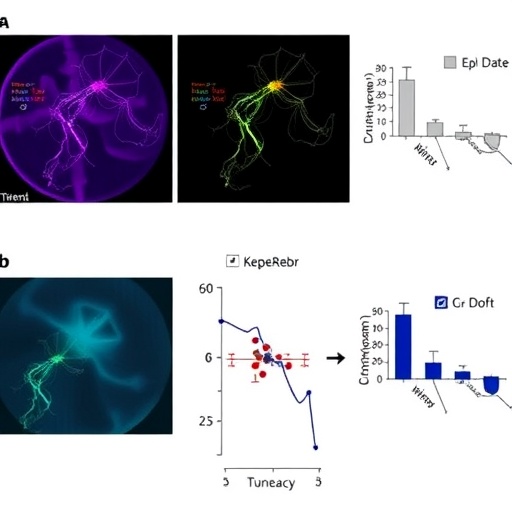In a revolutionary stride towards enhancing forensic and clinical diagnostics, a team of researchers has developed an advanced multiplex assay system capable of simultaneously detecting HIV-1, hepatitis B virus (HBV), and human short tandem repeats (STRs) using capillary electrophoresis (CE) technology. This innovative assay represents a significant leap in molecular forensic science, offering unprecedented sensitivity, specificity, and efficiency by consolidating multiple analytical targets within a single test platform. The approach promises to expedite accurate viral identification alongside individual genetic profiling, forging a powerful tool for both medical and forensic investigations.
The central technical innovation lies in the assay’s integration of viral DNA/RNA detection with human STR genotyping, which traditionally require separate methodologies. The assay consolidates these processes using a multiplex polymerase chain reaction (PCR) technique optimized for CE systems, which are renowned for their high resolution, rapid analysis times, and quantitative capabilities. By amplifying multiple genetic loci concurrently, the assay ensures co-detection of viral sequences and polymorphic STR markers from the same biological sample, thus maximizing data yield while minimizing sample consumption and labor.
In forensic contexts, identifying the presence of blood-borne pathogens like HIV-1 and HBV is essential not only for prosecutorial evidence but also for safeguarding personnel and understanding epidemiological aspects related to crime scenes. Simultaneously, STR marker profiling remains the gold standard for individual identification due to its high discriminatory power. The multiplex assay elegantly fuses these two critical investigative challenges, delivering a streamlined workflow that could redefine forensic molecular biology.
.adsslot_PvzwckV3Ee{ width:728px !important; height:90px !important; }
@media (max-width:1199px) { .adsslot_PvzwckV3Ee{ width:468px !important; height:60px !important; } }
@media (max-width:767px) { .adsslot_PvzwckV3Ee{ width:320px !important; height:50px !important; } }
ADVERTISEMENT
Technical validation of the assay involved a rigorous series of experiments assessing amplification efficiency, analytical sensitivity, and specificity. The researchers demonstrated that the assay could reliably detect low viral loads of HIV-1 and HBV in diverse biological matrices, including blood and buccal swabs, while simultaneously generating complete STR profiles with minimal allele dropouts or artifacts. Precision studies further confirmed reproducibility across independent runs and different CE platforms.
Moreover, this multiplex system incorporated strategic primer design to avoid cross-reactivity and ensure strict discrimination between human and viral sequences. Such an approach mitigates false positives and enhances reliability, a persistent challenge in multiplex PCR assays. The utilization of fluorescently labeled primers also facilitated multi-color detection in the CE system, allowing the differentiation of viral amplicons from STR loci based on spectral properties as well as fragment length.
In clinical diagnostic applications, rapid and multiplexed detection can accelerate patient triage and treatment decisions. Co-screening for HIV-1 and HBV is particularly relevant due to the frequent coinfection scenarios that complicate disease management. The ability to perform viral screening alongside genetic profiling could open avenues for personalized medicine, where a patient’s genomic ID and infectious status are simultaneously confirmed.
The integration of forensic STR typing within the same assay provides not only individual identification but also chain-of-custody assurances for biological samples. This dual functionality ensures that forensic investigations maintain strict sample integrity, minimizing contamination or sample mix-up risks. As forensic laboratories aim for higher throughput and cost-effectiveness, such multiplex platforms could become the standard for routine testing.
The study also addressed data analysis challenges inherent in multiplex systems, where overlapping signals and polymerase artifacts often complicate interpretation. Custom bioinformatics pipelines and software tools were developed to precisely call STR alleles and viral amplicons, ensuring unambiguous readouts. Such software support is crucial for routine use in busy diagnostic environments.
From a broader standpoint, the development of this multiplex assay aligns with global efforts to improve infectious disease surveillance while maintaining robust human identification capabilities. It addresses pressing needs in forensic casework and public health, particularly in regions burdened by HIV and HBV epidemics, demonstrating how technological innovation can have far-reaching societal impacts.
Importantly, the researchers verified the assay’s performance using clinical and forensic samples, reflecting real-world conditions. These trials confirmed that the multiplex system retains high sensitivity and specificity even in the face of complex biological matrices and potential inhibitors, a critical prerequisite for applied forensic and diagnostic utility.
Future directions indicated by the authors include expanding the assay panel to encompass additional viral pathogens and forensic markers, potentially incorporating mitochondrial DNA or single nucleotide polymorphisms (SNPs) for even greater discriminatory power. Additionally, automation of the entire workflow from sample preparation through data analysis could further enhance throughput and reduce user error.
This multiplex assay signifies a compelling convergence of molecular biology, forensic science, and clinical diagnostics, showcasing how integrated platforms can streamline complex analyses. By bridging pathogen detection and human identification in a single CE-based system, this innovation could underpin next-generation forensic protocols and infectious disease screening strategies worldwide.
Given the assay’s demonstrated robustness, sensitivity, and cost-efficiency, forensic laboratories and diagnostic centers might soon adopt this technology as a standard tool. Doing so could accelerate case resolutions, enhance biosafety, and improve patient outcomes, highlighting the practical benefits when cutting-edge research translates into operational realities.
In summary, this study’s multiplex assay offers a game-changing approach for simultaneous detection of HIV-1, HBV, and human STRs, leveraging capillary electrophoresis technology to deliver rapid, sensitive, and reliable results. Its validation under clinical and forensic scenarios underscores its versatility, positioning it at the frontier of molecular diagnostic innovation. As the landscape of forensic and infectious disease testing evolves, platforms like this will play an increasingly pivotal role in delivering comprehensive, integrated genomic insights.
Subject of Research: Development and validation of a multiplex assay system for simultaneous detection of HIV-1, HBV, and human STRs for forensic application.
Article Title: Development and validation of a multiplex assay system for simultaneous detection of HIV-1, HBV, and human STRs for forensic application on CE system.
Article References:
Liu, Y., Chang, Z., Wen, D. et al. Development and validation of a multiplex assay system for simultaneous detection of HIV-1, HBV, and human STRs for forensic application on CE system. Int J Legal Med (2025). https://doi.org/10.1007/s00414-025-03569-0
Image Credits: AI Generated
Tags: advanced genetic profiling methodsblood-borne pathogen identificationcapillary electrophoresis applicationsenhancing diagnostic sensitivity and specificityforensic molecular diagnosticsHIV-1 and HBV detection technologyhuman short tandem repeats analysisinnovative forensic analysis toolsmultiplex assay for virus detectionmultiplex PCR technique optimizationrapid analysis in forensic scienceviral DNA RNA co-detection





